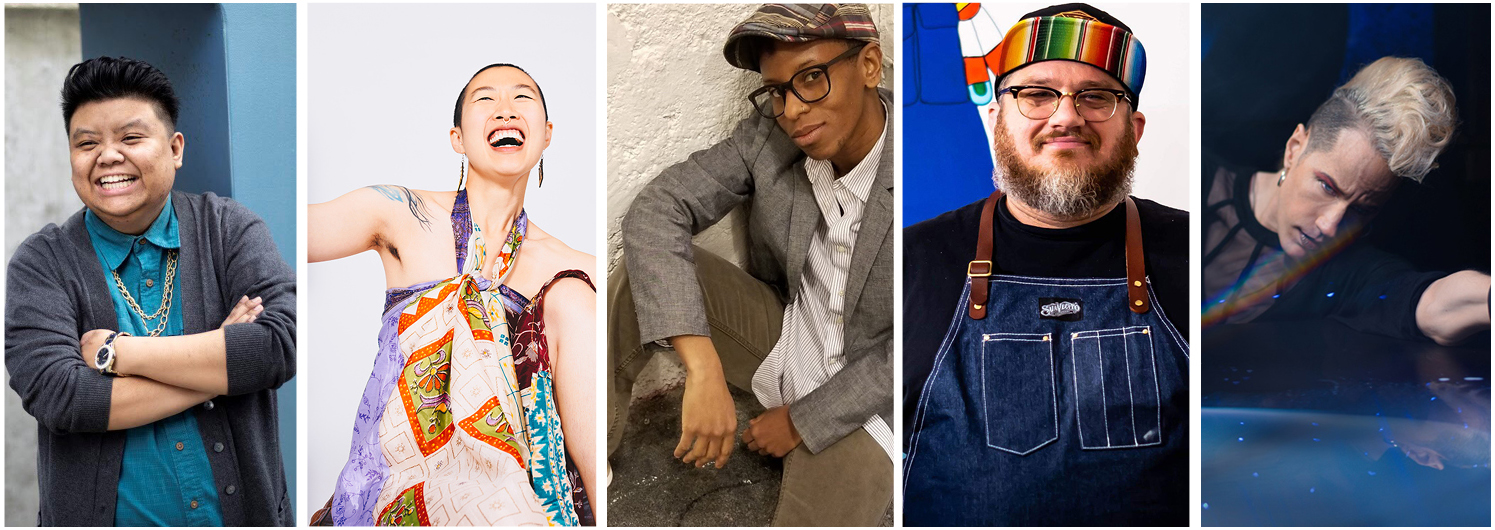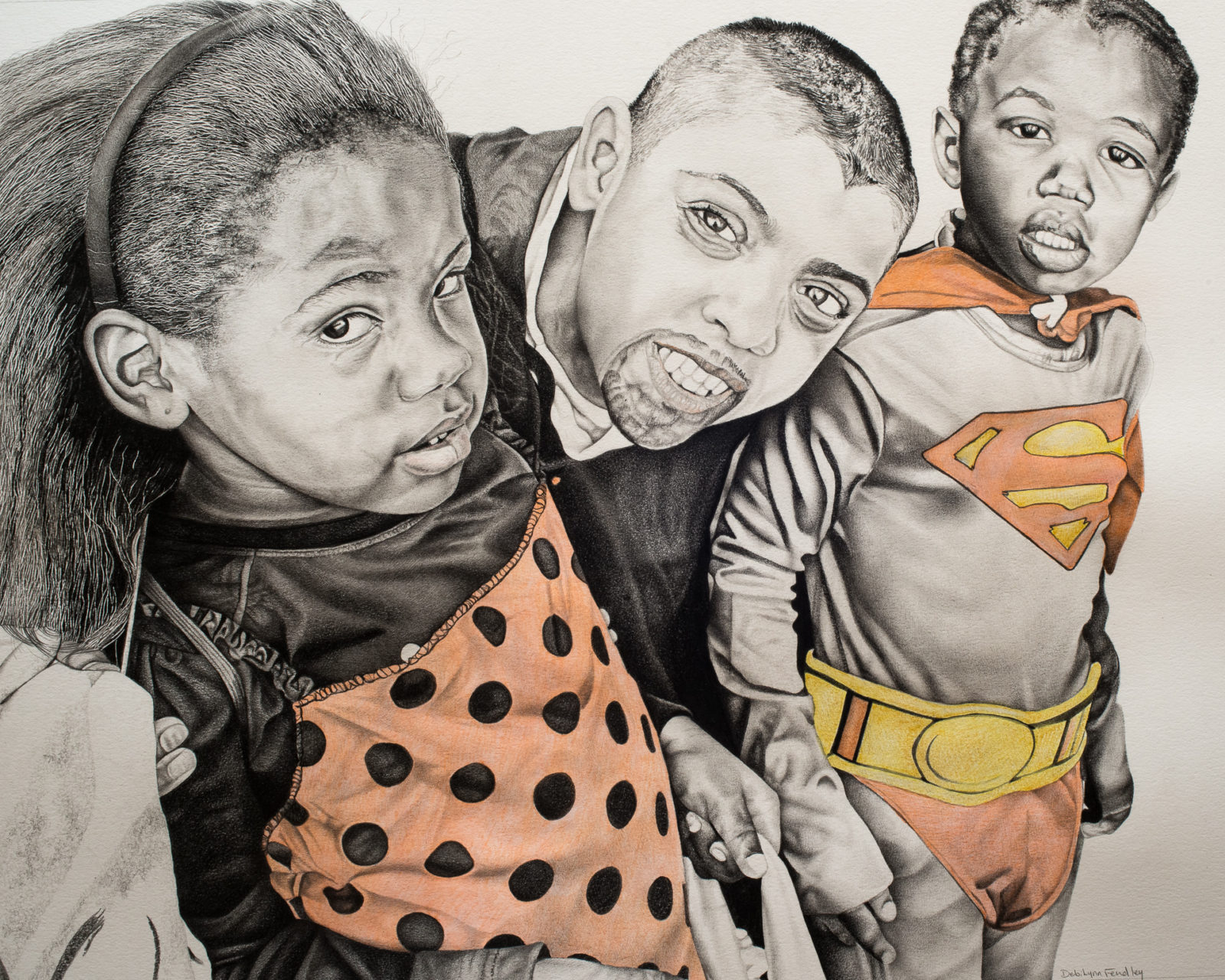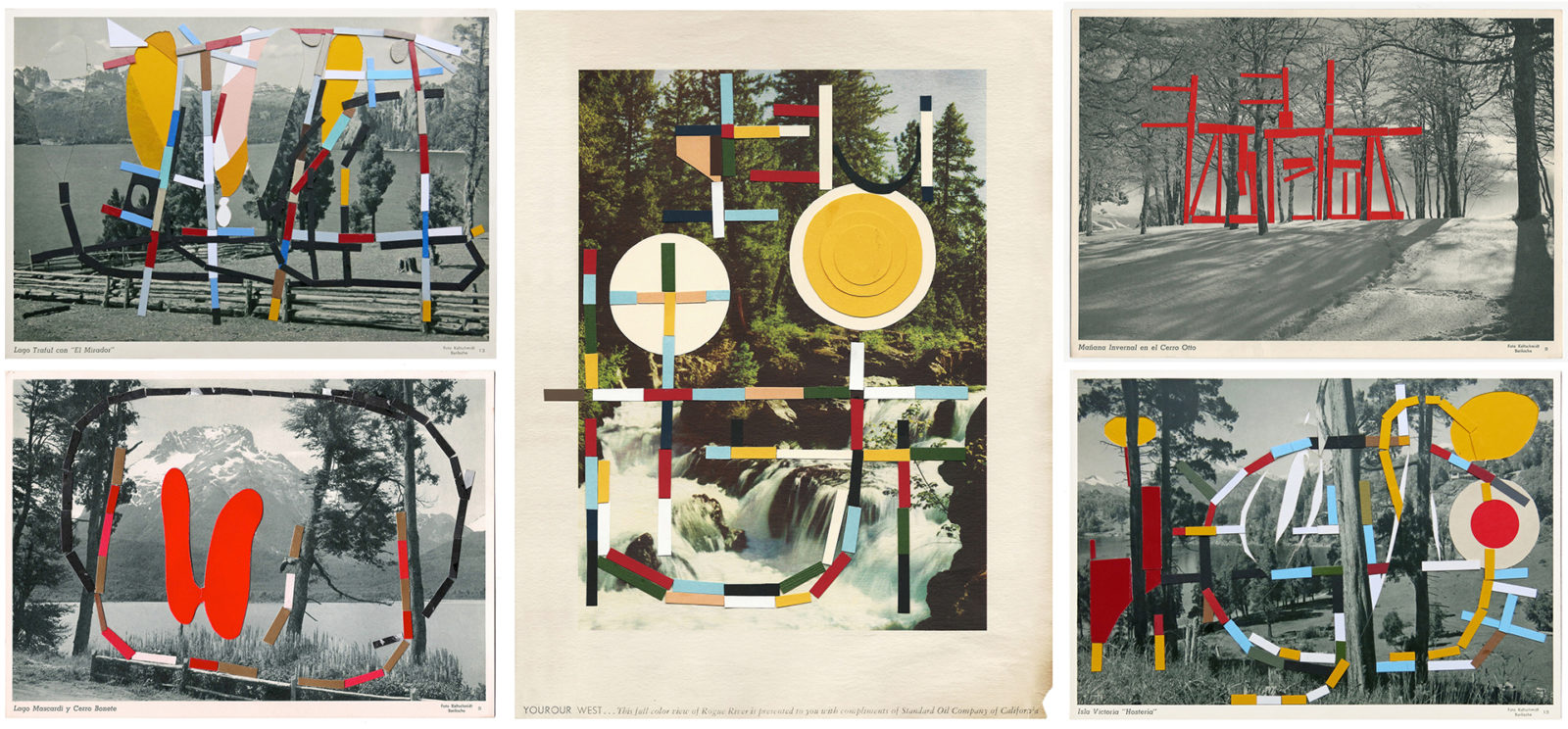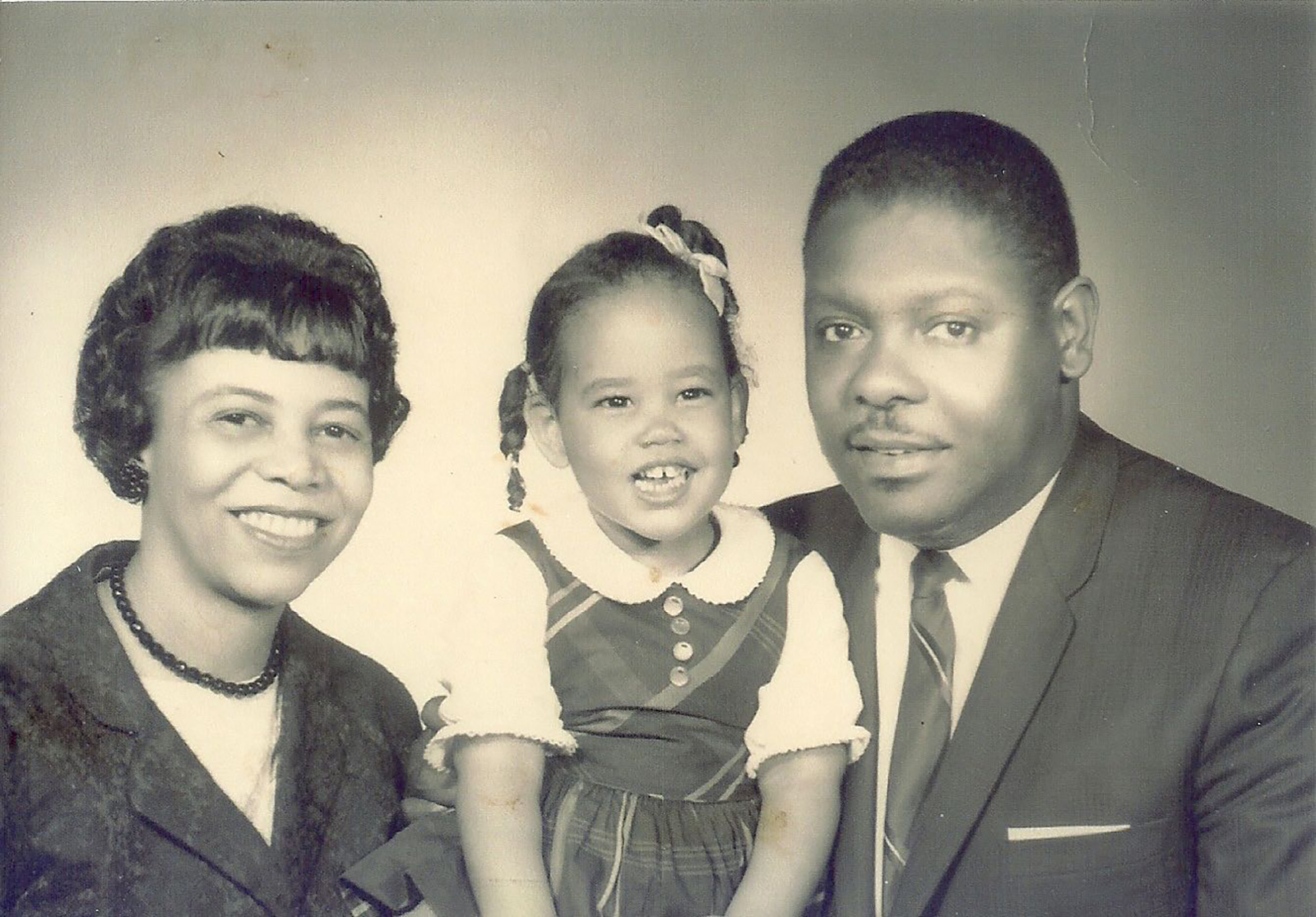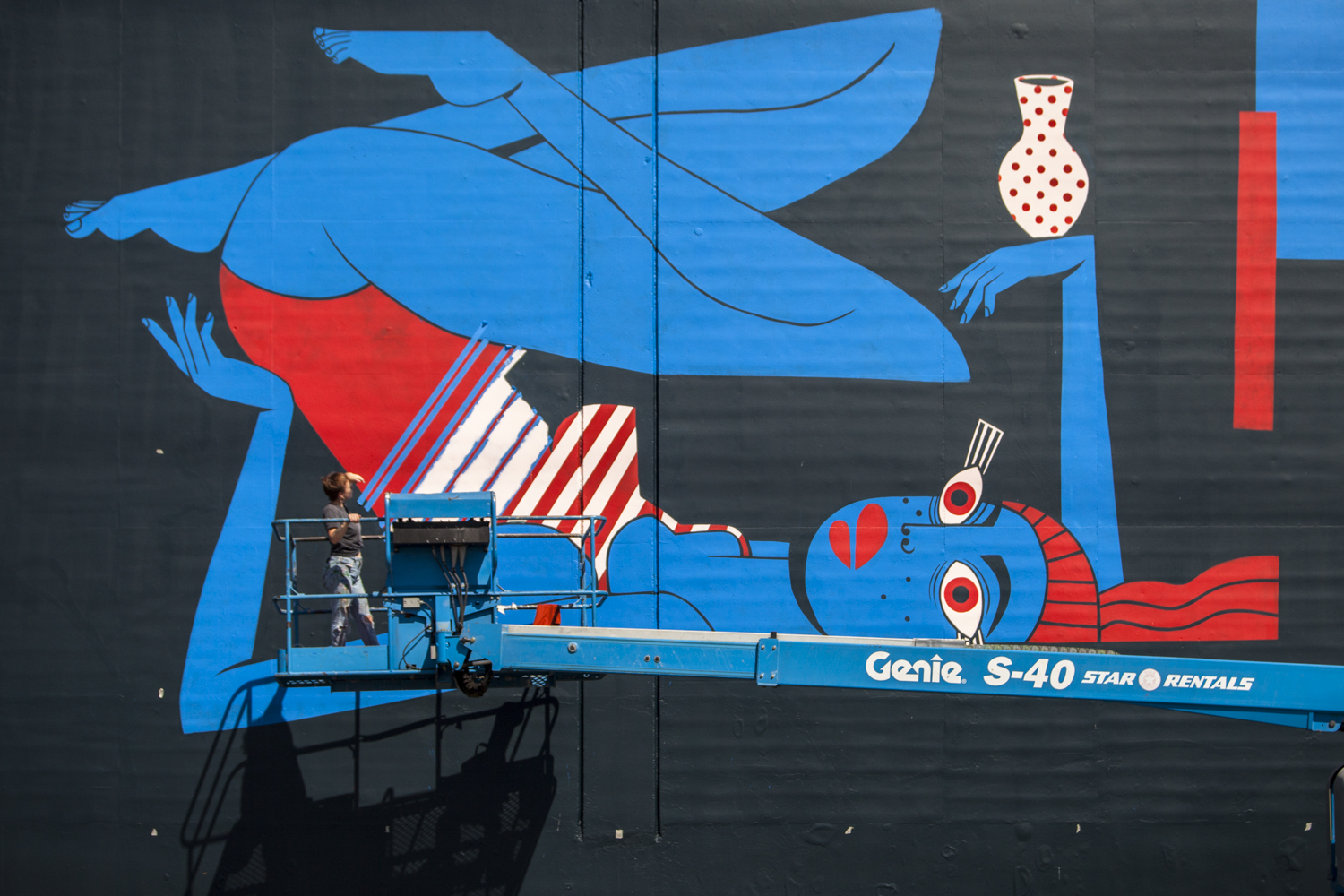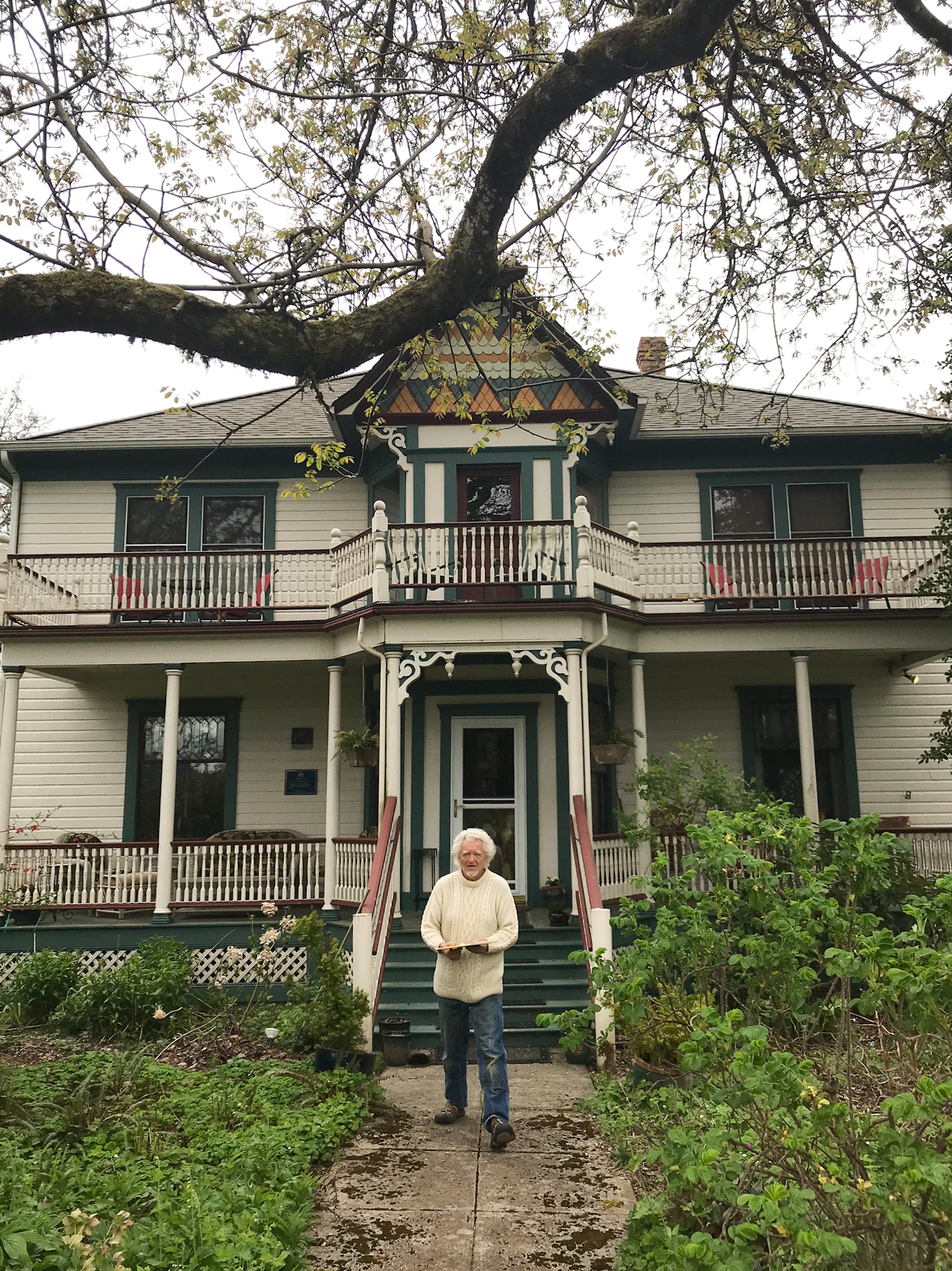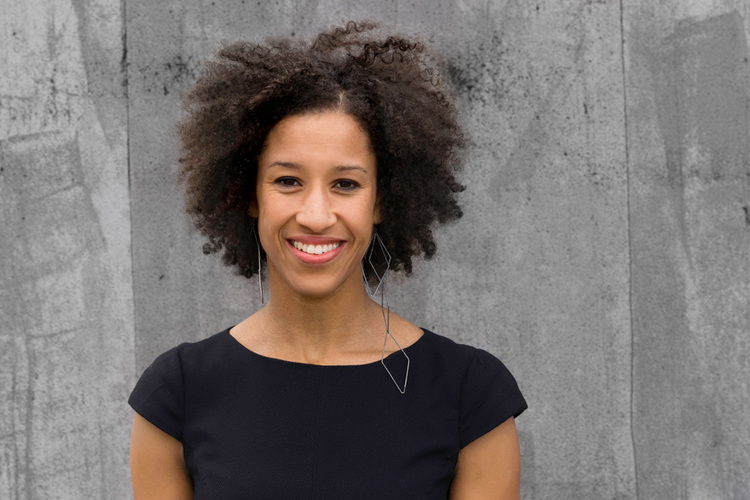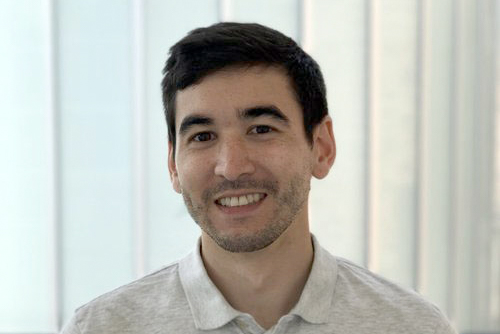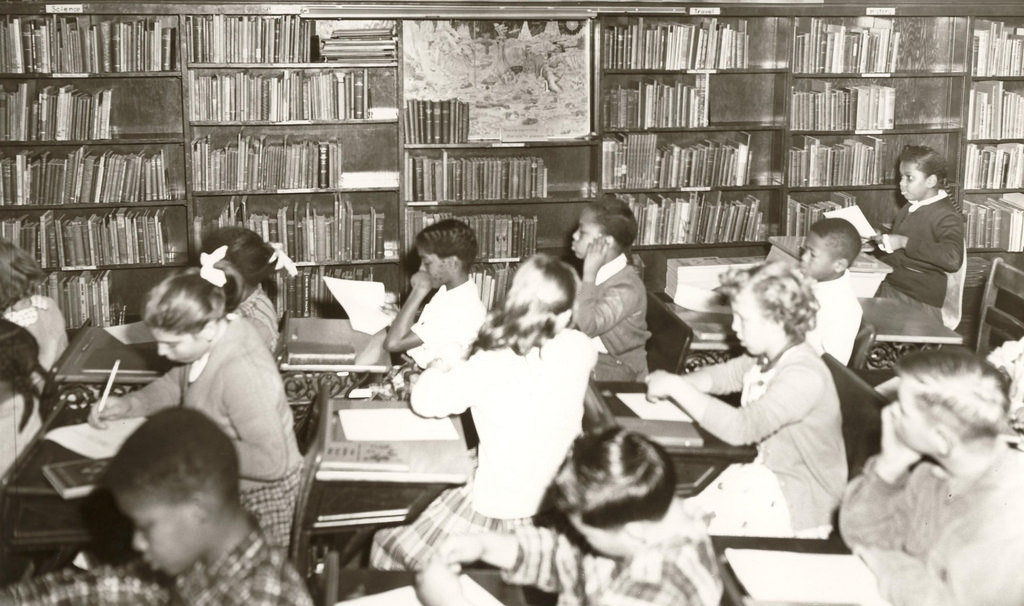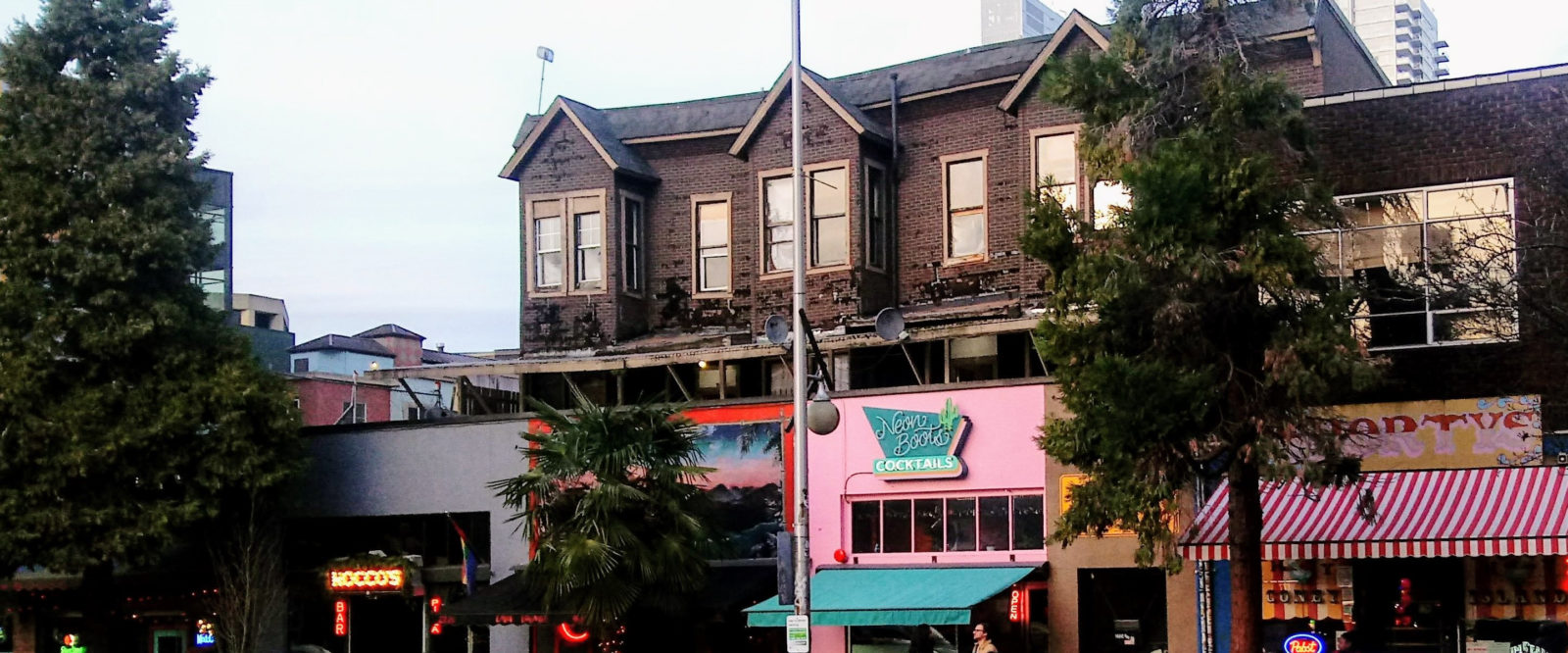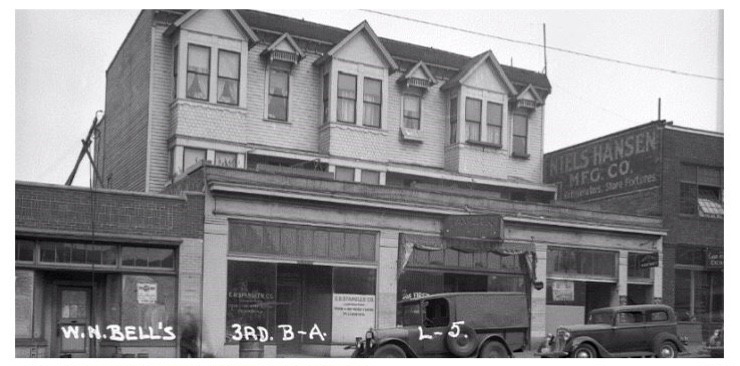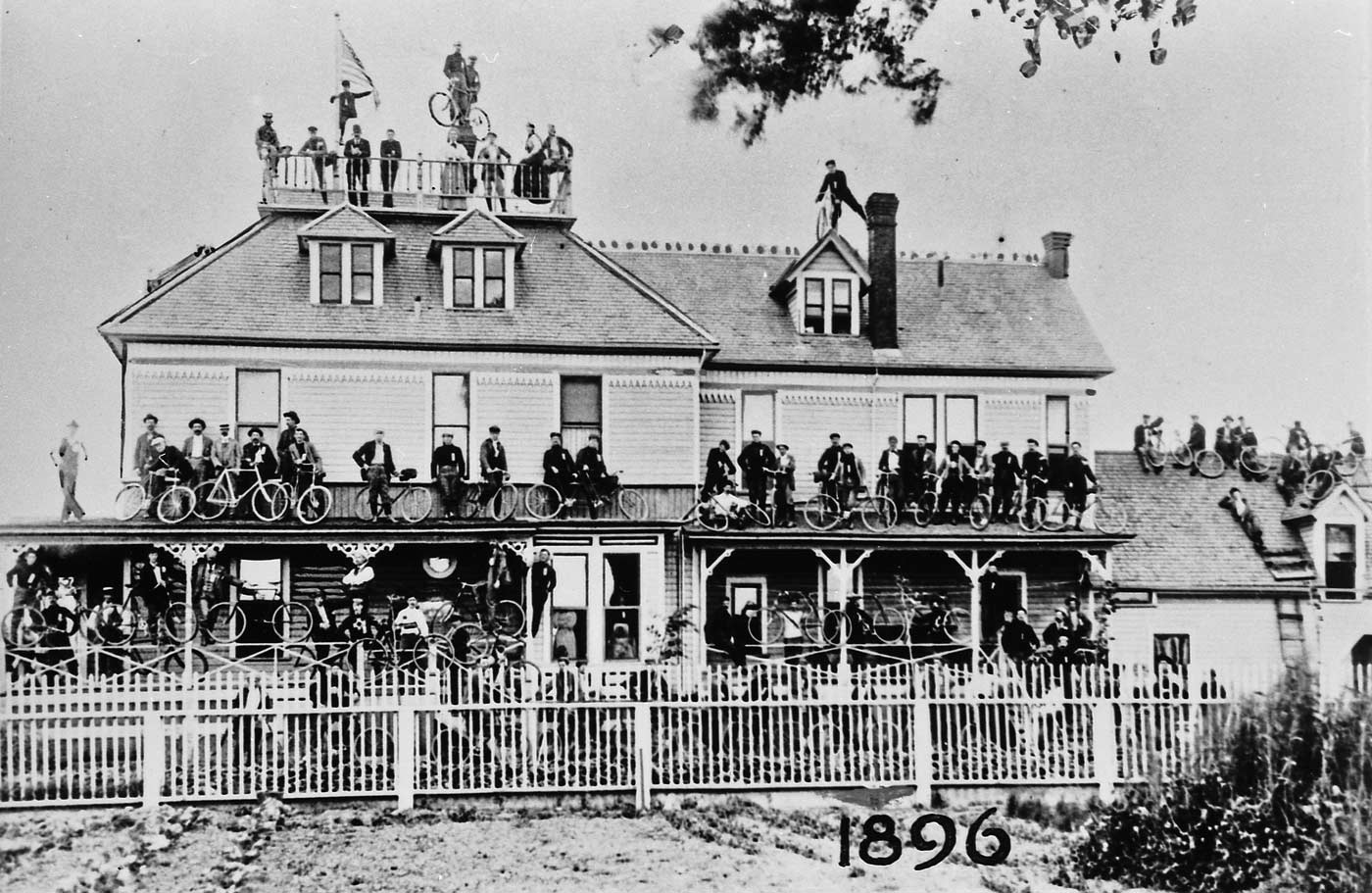Continue Reading ›
After 27 years serving as the Director of our Public Art program, Cath Brunner is moving on this fall to pursue independent consulting. As Cath passes the baton to Kelly Pajek—previously a Public Art project manager here at 4Culture—the two sat down for an interview that covered decades of projects and included lots of laughs and a few tears! Many of the projects and artists Cath mentions are featured in the video above, created by Collection Curator Jordan Howland. The edited transcript of their conversation is below:
Kelly Pajek: Well, Cath!
Cath Brunner: Well, Kelly!
KP: It’s kind of impossible to capture your decades here in just a little bit of a conversation, but can you share what your trajectory was to end up in this field?
CB: Oh, my gosh, actually, when I moved to Seattle from Galveston, Texas—working in Houston and living in Galveston—I moved here not knowing anyone and not having a job. And I was a working artist, making a living by being an artist in Texas, and all of a sudden encountered Seattle—which, in those days, wasn’t as expensive as it is now, but I paid more to park my car in Pioneer Square than I did to rent an entire old grocery store to be my studio in Galveston, Texas.
[laughs]
So I was like, oh! We’re not in Texas anymore. So we started realizing we needed to get real jobs, in addition to being artists—or, jobs that at least could pay the rent. And I saw an ad in the Seattle Weekly and it said you had to have the following skills: you had to know about contemporary art, you had to have some arts administration experience, and you had to know how to read blueprints. And, I’ve worked on an all-female sheet rocking crew, I’ve run my own small remodeling company, I had been doing construction for years as an artist to pay the bills. So I was like, “I have those skills!” And those were the skill sets for a Project Manager in those days. You had to like construction and know it, like art and know it, and you had to have administrative skills. So Glenn Weiss hired me, and I started working here.
KP: And the rest is history.
CB: And I had no real concept of public art, except that I realized after I started that I’d been doing it all along. I’d been doing a lot of community based artwork, I’d been managing an Artists in the Schools program in Houston, I’d been working on temporary festivals with performances, I’d run a small local art center where we brought artists in and we’d always ask them to do something out in the community in addition to their exhibition. And so I realized, “Yeah, I’ve been doing public art.” Although, we didn’t call it that, we didn’t have a sense of it.
KP: I know, when we started doing what we do it wasn’t really public art per se. There wasn’t a field, there weren’t programs we went to, you didn’t get a degree in public art. It just was and you figured it out.
CB: …and we figured it out. There were different ways of working and different ways of connecting. And I think there always was a strong desire for artists to communicate, to make their work relevant to people. Not just to depend on people coming into a museum or coming into a gallery exhibition—although, I love to do those things myself, I realized when I was working in Galveston and since I’ve been working in Seattle that what really interests me is getting out of those venues and just getting out into life and the world.
And they were also looking for an artist or administrator who could shape the Artist-Made Building Parts™ program, and that was a lot of the kind of work I was doing as an artist. I’d done functional jewelry, functional ceramics, elaborate—but mostly functional—furniture, I’d worked with interior designers, architects and I knew what they were looking for and what would appeal to them. So it seemed completely normal to me to work in that way. That was the good thing about coming from Texas—it was more normal in those days in Texas than it was in Seattle. Texans—I can say this to you because you used to live and work in Texas—
[laughs]
—they’re pretty showy!
KP: Yeah.
CB: They like a house that’s pretty showy, they like to commission artists to work on their houses. They have a hedonistic spirit! And so I thought, “I know exactly this world, I’ve done this.”
KP: It’s so interesting to hear you talk about your time in Texas, because there is that real can-do spirit. And I think it still exists today and you’ve really brought that to the field. I think so many people who have had the opportunity to connect with you would say that that’s an incredible attribute that you have. So going back a little to the field of public art, then versus how it is now: what would you say about it now? How do you hope it’s going forward?
CB: Well, here in Seattle, I can say one of the shifts and changes I’ve seen that I really like is that there’s a lot more collaborative spirit between a lot of different disciplines—visual arts, performing arts, design, architecture, public space making, urban planning, data. I think in the early days, we really had to break down some barriers. I was cold-calling a lot of architecture and design firms, and what I realized was that they felt like they weren’t being given an opportunity to be creative themselves, that they felt like the artists were getting to have this extraordinary opportunity to put forward interesting ideas. So I think, reinvigorating that conversation about creativity and innovation and recognizing that we are a collaborative agency was key. One of the first things we did was to start really developing that idea—we started bringing the design professionals in and we started really challenging the artists and designers to work together in a really proactive way. I think Seattle’s always had that amazing history. Why wouldn’t we want to bring artists in early in the process? Why wouldn’t we want to collaborate with them? That’s an amazing opportunity to have. I think our field in general has evolved in that way. I think Seattle in particular, is very strong in that way.
And then I think what’s also happened is that people began with the assumption that public art was permanent, integrated—we still have that, and I still fight for that—but we’ve also managed to expand that idea of public art into temporary works, social practice work, collaborations with mural artists, poets. I think the really exciting part is that now it’s hugely broad, we can call it all public art. And it allows us to work with a whole group of different kinds of artists. The menu of choices is huge, and gets broader every day. From the beginning we’ve had this idea that it’s the work and thinking of artists—I love that. I’ve always loved that “and thinking” part. I think now we’re really seeing the fruits of that. We have a whole ecosystem at our fingertips.
KP: Yeah, this is something I’ve seen in my work around the country. And maybe it’s also the times that we live in, but I feel very lucky to be in a place like Seattle and King County, where there’s so much civic dialogue about what’s going on in our world—it’s local, it’s national, its global. How can artists’ voices and what they bring influence that? There really is a dynamic menu of possibilities. There’s such a history of public art in this region, and one of the things I was really impressed with when I moved here was that I didn’t really have to defend why we do public art. The question instead is always, “Where is my public art?” “What will the public art be?” You’re somebody who champions this work, and I’ve seen you turn non-believers into believers—can you talk a little bit about that?
CB: I don’t think I make people believe—I start with, “I believe in what you do.” When we did some work in Aberdeen, the very first thing they told us was that people there were feeling depressed about their city’s future, people were wondering where the jobs are going to come from. People want to feel pride in their community. So the first thing is: we believe in what you are challenged with and what you’re trying to accomplish. And then I think it’s an easier process to understanding how artists can help. The biggest challenge is leaving it open—people want to know what’s coming. Many of us have lost our sense of adventure, our sense of risk, our sense of “what the heck.” It’s a heck of a journey, and it may fail, and that’s okay. We don’t know what’s going to happen, so what you have to come back to is that we really do care about what you need to be successful. It’s really not about what the artist wants to do. It’s more about what do you want to do, and how can we find an artist to help you achieve that? People respond to that.
KP: That’s really the place to start: what does the community want? Who are we talking with, what is the hope? It’s about art, but it’s about that too.
CB: It is, and it’s also not reaching straight away to what the art looks like. We spend a lot of time up front just trying to talk about things that are difficult to put words to. I think that sometimes people want to start dealing with exactly how the art looks because they don’t really want to talk about the bigger things that are going on—their insecurities, their vulnerabilities, or their aspirations in a really big, human way. So you have to keep bringing them back to that place. It’s a hard thing to give people permission to do that, but that’s what great arts administrators are doing. They’re making it safe for people to be unsafe.
KP: It’s about trust.
CB: Yeah.
KP: And again, you build it with communities.
CB: It’s hard! Sometimes you just have to say, “I don’t know! And that’s the great thing about it.” And people look at you like you’re crazy.
[laughs]
KP: You just have to be confident when you say that.
CB: You have to be very confident! I do actually really believe that. The other thing I think about great administrators—and we have a bunch of them here in this region and certainly here at 4Culture—it’s never about us, but we always have to walk in with the utmost confidence. That’s a hard line to walk, to recognize that it’s never about you, to have a humble, back-of-house spirit but with a total front-of-house fierceness. That is going to make people believe in where you want to go.
KP: It’s true! It’s a jack-of-all-trades—you’re cleaning up at the end of the night and you’re also happy to speak in front of 300 people. And you have done that.
CB: I love that about it!
KP: So talking a little bit more about the risk and reward—and I mean this in the best way—
[laughs]
—one of the things I’ve learned from you is that we can learn from the failures. And it’s just as important as the successes. So what do you think has been the greatest risk for the best reward?
CB: Well, I was not the project manager, but I think one of the greatest risks for the best reward was—and is—Creative Justice. I feel really proud of that. That was hard on a variety of levels. To convince partners who really didn’t want to see beyond the notion of art being a beautiful object to trust that artists could play a meaningful role in reform of the criminal justice system—that was hard. It wasn’t my achievement at all. Diana Falchuk, Aaron Counts, Jordan Howland, Nikkita Oliver, Heidi Jackson, Shontina Vernon —those people were the best possible implementers. So I think that was a risk and reward model that will be amazing for many years to come. We will look back on that.
Some of the really robust programs that we’ve grown with some of our partners—like sewage treatment plants, transfer stations—were hugely risky. Because of course, it’s difficult to convince people often to do public art anyway, but to do public art in a sewage treatment plant or in a dump? There were a few really difficult editorials written about art in the dump—we really had to climb our way back out of that. I learned a lot from that experience. It really taught me that you can’t fly under the radar. You can’t be afraid of failing and you can’t be afraid of rolling up your sleeves and truly working in all aspects of our community and owning it, big time. That has been risky, but it’s been hugely rewarding because people respond to it. People—adults and children—really respond to the art in sewage treatment plants! It gives them an access point to understand how our water is managed. Same with art at the transfer stations—it’s giving people access into how various civic endeavors work that we don’t think about otherwise. You put your trash out, you don’t think about it. You flush your toilet, you don’t think about it. Artists are part of the solution. They shine a light on things so we can all be better stewards of our planet. That looks easy now, but it wasn’t easy. I have this horrible memory of a news program—every day for a week they showed a close up of a toilet with dollar bills going down it!
[laughs]
KP: At least they weren’t putting art down the toilet!
[more laughs]
CB: But you know what, we actually asked the reporter to do an in-depth story—to talk to the artists, to talk with me and others at 4Culture, to go to the site, talk to the designers. They did a really thoughtful piece. They presented objective facts to the audience. And after a week of flushing dollar bills, I was certain we were going to get a clamoring from the public about what are we doing, but the Executive at the time, Ron Sims, got two emails and I got none!
KP: Wow.
CB: When you put it forward to people and say, “You spend time in these systems, these are some of the biggest issues we’re going to face—clean water, clean air, how to manage our waste responsibly.” When you really explain what’s at stake, the response almost always is, “Why shouldn’t we have everybody working on that, including our artists?” So that’s been hugely rewarding and I’m really proud I specialized in art in dumps.
[laughs]
KP: I think it’s the uncovering of this day-to-day that we don’t think about but keeps things running. As we think about what public art is and what it can be, and all the education and storytelling—everything that’s below us is part of the story. It’s huge to have artists help share that story.
CB: And artists love sharing that story! Artists are communicators—they want to reach out to people, they want to be tackling important issues.
KP: Yeah, and there are artists that love working at sewage treatment plants too!
CB: Totally love it. Some of the best live right here in town.
[laughs]
KP: Well, to that point—and this is going to be such a hard question—what artists really inspire you, or have really inspired you?
CB: There have been artists over time that have taught me a lot. I’m winding down at the office and people are sending me all these notes and reminders and I’m getting to relive a lot of things—that’s been so meaningful to me. There have been certain moments—these aren’t the only moments or the only artists—when people have influenced me to think differently. I remember very early on in a panel process when Nick Lyle , who’s an artist who lives on Bainbridge Island with his wife Jean Whitesavage , said something to me that I’ve never forgotten, that I’ve always found to be very true. He said, “Never underestimate the power of a well-crafted object.” And it is true that can overcome all other kinds of barriers—there’s some kind of innate appreciation we have for something well-made.
I watched Lorna Jordan , working on the front entry of the Regional Justice Center, be so doggedly determined to bite off every single ambitious piece possible. That level of ambition, that level of, “I am going to tackle it, I am taking this on” totally impressed me early on in my career.
Ted Savinar sent me a really sweet message about working with me. I was so fortunate to work with him at Harborview because I really began to understand the power of artists who come out of a different tradition—who come out of playwriting, out of theatre, using words—and what a remarkable, powerful, emotional connection that there could be through what was seemingly simple words and gestures and phrases.
I have watched artists who are immaculate editors. I put Christian Moeller in that camp. Artists that will not stop, but instead of making it more and more elaborate there’s a reduction there that just makes it truer and truer to its essence. I so admire that, and I try to watch for that.
I’ve watched so many artists in our region also just take on things with that can-do spirit that we’ve talked about. Cappy Thompson at the airport—having only done relatively small hand-painted glass vessels, being given a chance to do her first big commission, seizing the day in a four week turnaround, getting on an airplane to Taunusstein, Germany, researching who’s doing the largest hand-painted glass murals in the world—which happens to be in a little town in Germany because that’s where all the medieval cathedrals are—convincing them to paint a sample, living there at the facility with the owner and his wife, boxing that up, coming back, standing in front of a selection panel and saying, “I’m ready for this.”
[Pause]
And she was.
KP: Yeah.
[Pause]
Both: Sorry!
[Break to grab tissue]
CB: That makes me so proud.
[Tears and laughs]
KP: Insert tears here!
[More tears and laughs]
KP: That piece, it’s just so—even if you don’t set foot in Seattle, when you go through SeaTac Airport that’s the encyclopedic representation of artists in our area and what our region is. It’s just incredible to think about that and that you were part of that. And now with the extension of the light rail going south, at night it’s literally like a glowing beacon. As you come home it almost greets you like a storybook. It’s like Goodnight Moon, it’s the closing to your day, and it’s so special. It’s so great to hear that story because I’ve never heard that before.
CB: I also I also want to give a shout out to the artists who have served on our PAAC, our advisory board because they give up the opportunity to get commissions themselves, but they have so influenced the way we work and the way we think and what we’re able to do with artists. I’m thinking of, for example, Marita Dingus who was on the Public Art Commission very early on in my career and was really instrumental and pushing and talking about how artists of color can be better represented in our collection. And out of that grew the Cultural Heritage Collection at Harborview and we continue to really talk about those things and push them forward. Marita has been hugely influential in our community in general—she really changed my thinking about a lot of things.
I think that those artists who attend all the meetings and try to help other artists along—give them critique and advice and hook them up with fabricators they may not have worked with before—we just had amazing commitments from artists. Artists like Cris Bruch, Pete Reiquam, Claudia Fitch , and so many more. Mary Ann Peters brought the Port Art Commission to tears when she went to testify on behalf of formalizing their Percent for Art program. They cried. You know, those kinds of advocates in our community for the power of art—I just can’t stress enough how much they’ve influenced the way we work.
KP: Well, it’s interesting because something that’s come up lately as we all talk about you—we keep hearing how for so many artists, much of their best work has happened because they’ve been able to work with you. And I would say, as far as our path, there’s always been an exceptional outreach to sort of bring together the perfect dinner party—the right mix of committee members. And you really bring out their best qualities.
CB: Well, part of this, too, is passing it on to you! What do you see in the future? What are you thinking about? You’ve been working in this field a long time.
KP: Thanks for asking that. It’s so interesting to be here—to be at 4Culture after the career I’ve had moving around the country. And for me, every place I’ve worked, every team I’ve worked with has become family. And every place has been—whether for a short time period or longer—has really been about growing, about learning to create experiences. From the New York City subway, to convention centers, to schools, to working with the great team at the Seattle Office of Arts & Culture—coming here really feels like landing at home. Some of my questions for you were coming from a place of thinking about where we go—I can’t shake the world we live in right now, in good and bad ways. There are so many good things that are coming, and there are really horrible things happening. Out of the negative, I’ve been trying to think a lot about what the positive can be. And while I realize all of our work isn’t necessarily social practice, I’m thinking about things like Creative Justice and the power of that—how do we move forward? It is time to step up, and we need to be the makers of social change. It’s just too late to wait for anybody else to take care of it. I feel like there’s a real urgency right now. For both of us, we’ve been in the field a long time, there are always trends and change, ebb and flow. But I feel like we’re at a really critical point—the time is now, there isn’t a time to go back to. I so seriously think about this every day in the context of what we do. There’s always a way to do better and to learn. You’re one of the originators of 4Culture, from the King County Arts Commission, all the way to now—how does that feel?
CB: I see a tremendous positive future for 4Culture. All the change we’ve been through has made us tough, resilient, focused, brilliant programmers, a tight team. Our reach has gotten broader and I think that will continue. Change is a powerful motivator and it shifts your thinking and allows you to try new things.
KP: Any last words of advice for someone who might be reading who’s just starting a career in Public Art?
CB: Don’t be afraid to fail! On time and on budget is not always the measure of success.
[laughs]
CB: It’s so not! It’s so not. And be an advocate. There will always be somebody in the room watching out for maintenance. Always somebody in the room watching out for budget, or making sure that the artwork is built properly. There will be people like that and they’re necessary. But there won’t always be somebody who’s a really strong and articulate advocate for the artist’s vision. Learn that, care about it, be great at it.
KP: Do more of it.
CB: Do more of it! Twice as much and twice as often.


